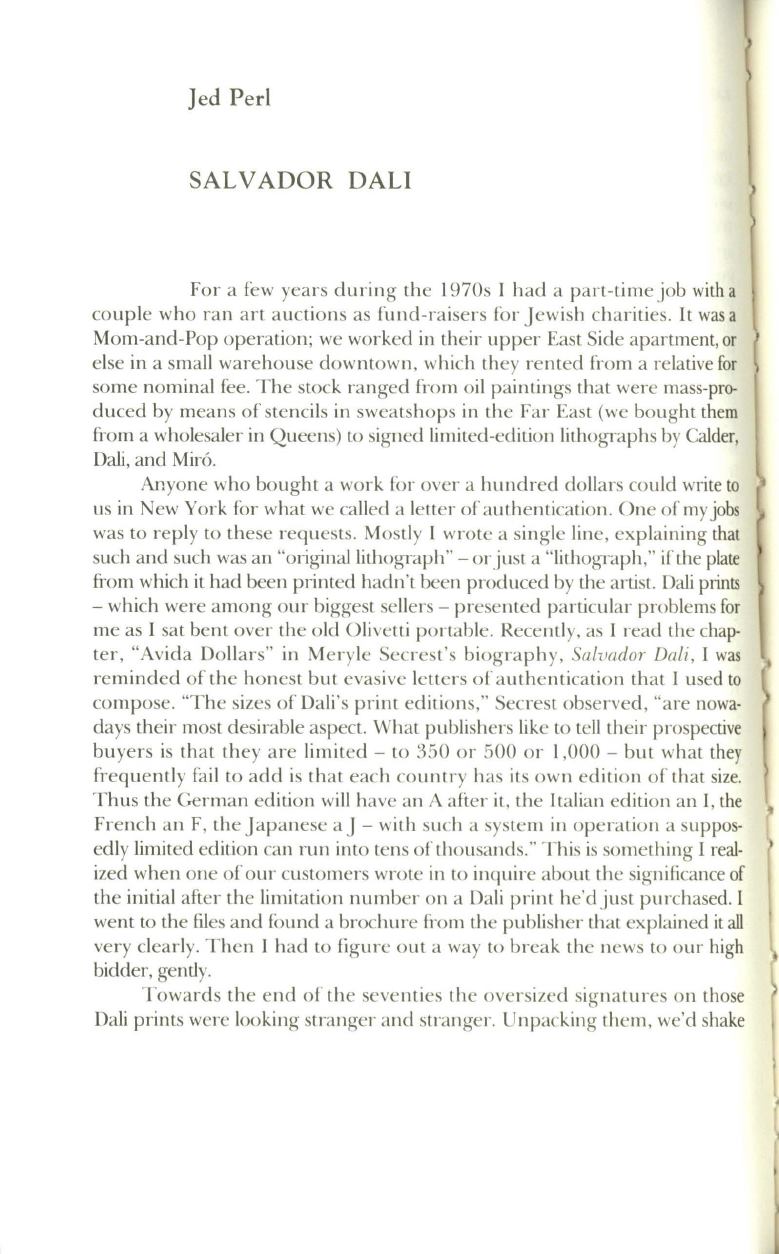
Jed Perl
SALVADOR DALI
For a few years during the 1970s I had a part-time job with a
couple who ran art auctions as fund-raisers for Jewish charities. It was a
Mom-and-Pop operation; we worked in their upper East Side apartment, or
else in a small warehouse downtown, which they rented from a relative for
some nominal fee. The stock ranged from oil paintings that were mass-pro–
duced by means of stencils in sweatshops in the Far East (we bought them
from a wholesaler in Queens)
to
signed limited-edition lithographs by Calder,
Dali, and Mira.
Anyone who bought a work for over a hundred dollars could write to
us in New York for what we called a letter of authentication . One of my jobs
was to reply to these requests. Mostly I wrote a single line, explaining that
such and such was an "original lithograph" - orjust a "lithograph," if the plate
from which it had been printed hadn't been produced by the artist. Dali prints
- which were among our biggest sellers - presented particular problems for
me as I sat bent over the old Olivetti portable. Recently, as I read the chap–
ter, "Avida Dollars" in Meryle Secrest's biography,
SalvadoT Dali,
I was
reminded of the honest but evasive letters of authentication that I used to
compose. "The sizes of Dali's print editions," Secrest observed , "are nowa–
days their most desirable aspect. What publishers like to tell their prospective
buyers is that they are limited - to 350 or 500 or 1,000 - but what they
frequently fail
to
add is that each country has its own edition of that size.
Thus the German edition will have an A after it, the Italian edition an
I,
the
French an F, the Japanese a J - with such a system in operation a suppos–
edly limited edition can run into tens of thousands." This is something I real–
ized when one of our customers wrote in
to
inquire about the significance of
the initial after the limitation number on a Dali print he'd just purchased. I
went to the files and found a brochure from the publisher that explained it
all
very clearly. Then I had
to
figure out a way
to
break the news
to
our high
bidder, gently.
Towards the end of the seventies the oversized signatures on those
Dali prints were looking stranger and stranger. Unpacking them, we'd shake


